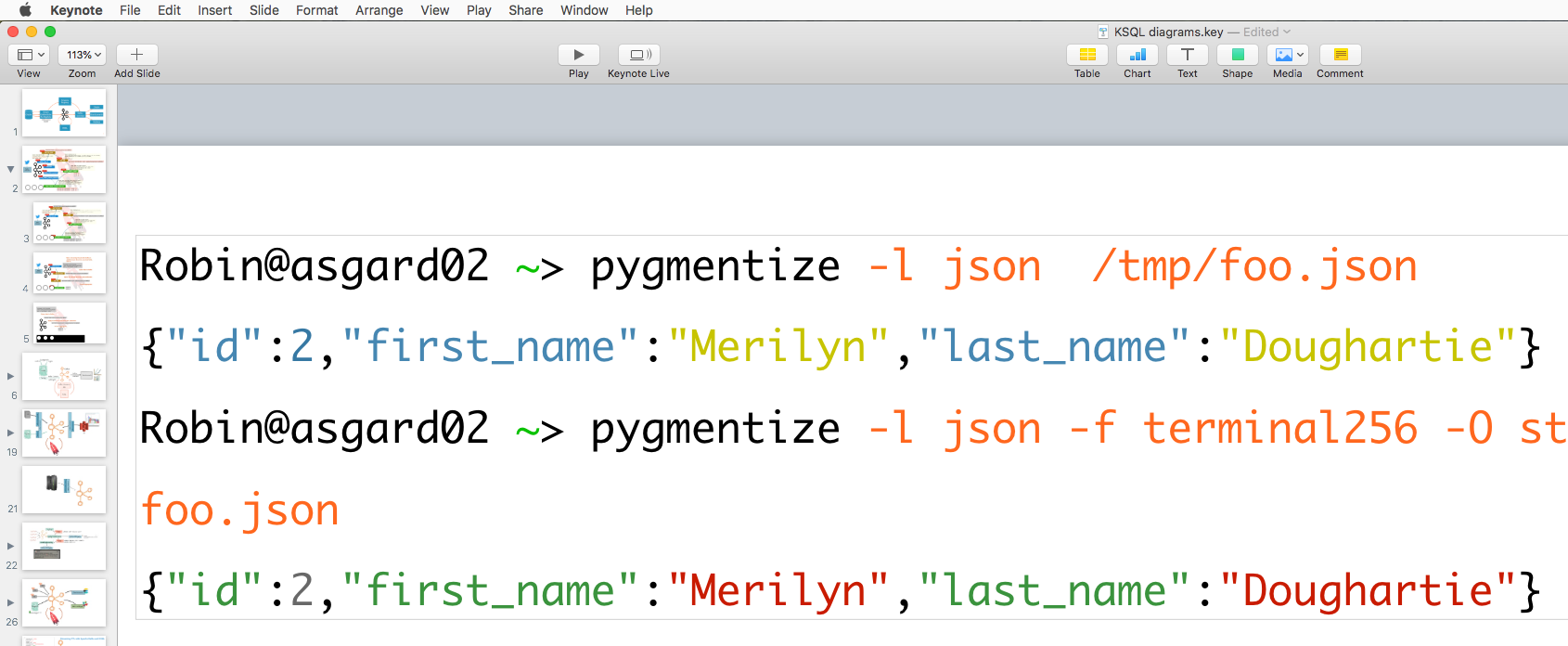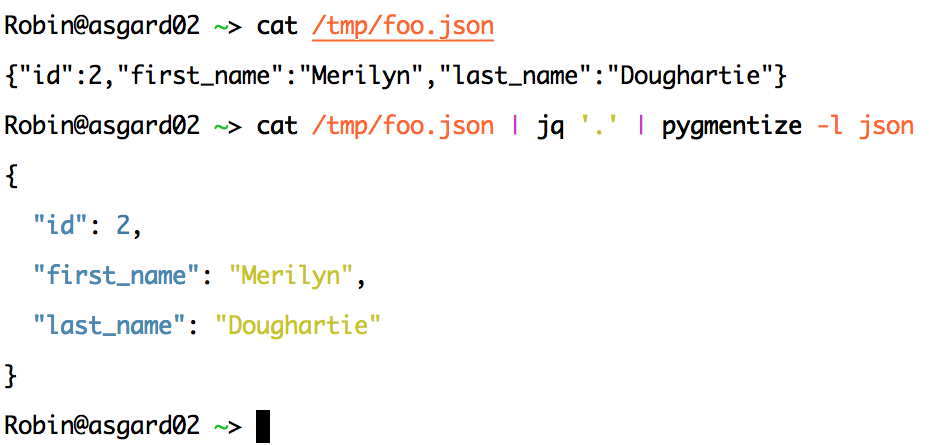So you’ve got a code sample you want to share in a presentation, but whilst it looks beautiful in your text-editor with syntax highlighting, it’s fugly in Keynote? You could screenshot it and paste the image into your slide, but you just know that you’ll want to change that code, and end up re-snapshotting it…what a PITA.
Better to have a nicely syntax-highlighted code snippet that you can paste as formatted text into Keynote and amend from there as needed. Here’s how.
Pygments is a library that does syntax highlighting for you, and you can access it through the pygmentize script. Install:
pip install Pygments
Now you can pass it a file:
pygmentize -l json /tmp/foo.json
and get some nice output:

There’s different styles to chose from:
pygmentize -l json -f terminal256 -O style=emacs

Just a tip - black background looks l33t, but sucks for being able to read from a projector. Use iTerm’s multiple profiles option to set up a white background for whenever you’re projecting your screen or copying formatting text like this.

Getting it into Keynote (or PPTX, if you must) 🔗
If you’re using iTerm you can select the text and then use the Copy with Styles option from the Edit menu (press Alt to access this option), and paste the results directly into Keynote with the formatting preserved.

From here you can change the font, size, line spacing etc etc - much easier than having to re-do the screengrab each time.
If you also want to format your JSON with linebreaks, run it through jq first:
cat /tmp/foo.json | jq '.' | pygmentize -l json

Output to HTML 🔗
As well as writing the highlighted code to the terminal, you can output to things like HTML, for nice embedding in…blogs!
cat /tmp/foo.json | jq '.' | pygmentize -l json -f html -O noclasses
<div class="highlight" style="background: #f8f8f8"><pre style="line-height: 125%"><span></span>{
<span style="color: #008000; font-weight: bold">"id"</span>: <span style="color: #666666">2</span>,
<span style="color: #008000; font-weight: bold">"first_name"</span>: <span style="color: #BA2121">"Merilyn"</span>,
<span style="color: #008000; font-weight: bold">"last_name"</span>: <span style="color: #BA2121">"Doughartie"</span>
}
</pre></div>
Which looks like:
{
"id": 2,
"first_name": "Merilyn",
"last_name": "Doughartie"
}
There’s other formatters, including generating images, which is quite nifty.

For images, run pip install PILLOW for the required library first.
Support for SQL, and more! 🔗
Pygments supports multiple languages too, and can do things like enforce upper-case for SQL. If you don’t pass a file to pygmentize then it’ll read from stdin - press Ctrl-D to end input and see the result:
pygmentize -l sql -F keywordcase:case=upper
